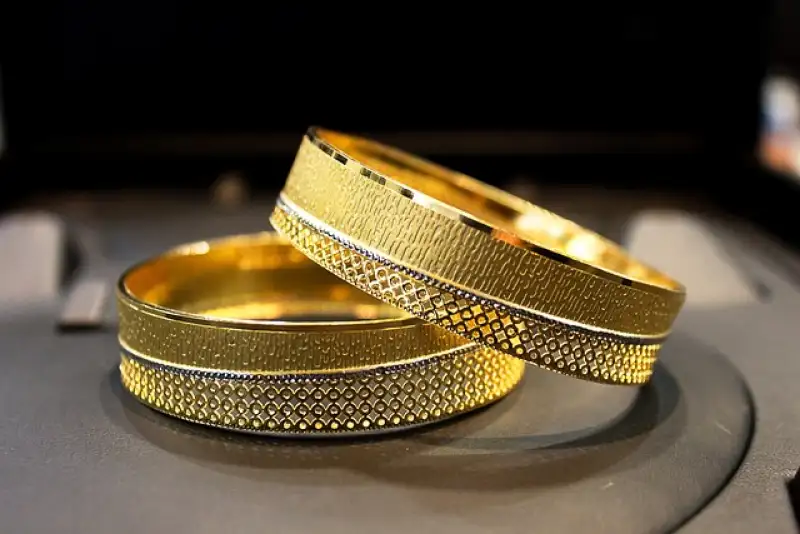ELECTROPLATING TECHNIQUES FOR JEWELRY: UNDERSTANDING GOLD, RHODIUM & PLATINUM PLATING PROCESSES
Electroplating is essential in the jewelry business because it increases the value, longevity, and aesthetic appeal of jewelry. Understanding electroplating procedures will help you make well-informed decisions about your jewelry, whether you are a retailer, producer, or enthusiast. In this article, we will look at the electroplating process and the distinctions between gold, rhodium, and platinum plating.
JEWELRY ELECTROPLATING: WHAT IS IT?
The technique of electroplating involves applying a thin layer of another metal to a metal item using electrical current. Electroplating is used in jewelry production to improve durability, prevent tarnishing, and improve aesthetic appeal. This method is frequently used for plating platinum, rhodium, and gold.
The Process of Electroplating
- Surface Preparation: The jewelry item is meticulously cleaned to get rid of any oxidation, oils, or grime. This guarantees that the plating metal will adhere properly.
- Electrolyte Bath: The jewelry is immersed in an electrolyte solution that contains metal ions of the preferred plating material (platinum, rhodium, or gold).
- Application of Electrical Current: The metal ions are deposited onto the jewelry surface by passing an electric current through the solution.
- Final Rinsing & Polishing: The final step involves cleaning and polishing the plated jewelry to get a perfect, exceptional finish.
GOLD PLATING FOR JEWELRY
One of the most often used electroplating methods in the jewelry industry is gold plating. It entails applying a thin layer of gold on a base metal, like stainless steel, brass, or silver.
Benefits of Gold Plating:
Gold plating has the following advantages:
- Aesthetic Appeal: It produces an opulent gold finish at a lesser cost than genuine gold.
- Persistence: The basic metal is shielded from oxidation and corrosion and its durability is increased.
- Cost-effective: It mimics the look of gold jewelry without costing a fortune.
Distinct Methods for Gold Plating
- Gold Electroplating: The jewelry item is covered in a thin layer of gold.
- Gold Vermeil: It is a more robust coating of gold (at least 2.5 microns) over sterling silver.
- Gold-Filled: Compared to ordinary gold plating, gold-filled plating is a thicker, more durable layer of gold that is bonded over a base metal.
How to Preserve Your Gold-Plated Jewelry?
- Be cautious around water, fragrances, and strong chemicals.
- Keep in a jewelry box or soft pouch to avoid scratches.
- To preserve the gleam, gently wipe with a gentle cloth.
RHODIUM PLATING FOR JEWELRY
Plating with rhodium is a common practice for fine jewelry, particularly for silver and white gold. The rare and valuable metal rhodium gives jewelry a stunning white polish and increases its durability.
Benefits of Rhodium Plating
The advantages of rhodium plating include:
- Amplified Shine: This gives an appearance that is dazzling, reflective, and opulent.
- Resistance to Scratch & Tarnish: Jewelry is shielded against oxidation, scratches, and normal wear thanks to its resistance to tarnish and scratches.
- Hypoallergenic: The fact that it shields the skin from base metals makes it hypoallergenic, making it perfect for individuals with sensitive skin.
Typical Applications of Rhodium Plating:
- White Gold Jewelry: Rhodium Plating is used to make jewelry look brighter and whiter.
- Sterling Silver Jewelry: Jewelry made of sterling silver resists discoloration and tarnish.
- Platinum Jewelry: Platinum jewelry adds a layer of shine and protection.
How to Preserve Your Rhodium-Plated Jewelry?
- Jewelry plated with rhodium should not be worn in hot tubs or pools that have been chlorinated.
- Steer clear of harsh cleansers and use a gentle microfiber cloth to clean.
- Over time, replating can be required based on wear and tear.
PLATINUM PLATING FOR JEWELRY
Premium jewelry pieces often incorporate platinum plating, which is less frequent, to give them a high-end, long-lasting polish. Platinum is a great metal to use for jewelry protection since it is thick and extremely durable.
Benefits of Platinum Plating
- High Durability: Provides exceptional resistance to deterioration. This is one of the advantages of platinum plating.
- Superior Corrosion Resistance: Platinum is perfect for long-term use because it doesn't tarnish.
- Exquisite Finish: This gives jewelry a brilliant white luster and a sleek, high-end appearance.
Typical Applications for Platinum Plating
- Jewelry, engagement rings, and high-end watches all use this.
- This substance is applied to white gold and silver objects to make them more durable.
- The purity of this material makes it ideal for hypoallergenic jewelry.
Preventative Measures for Jewelry with a Platinum Plate
- Use water and mild soap to clean to eliminate any dirt accumulation.
- Avoid scratches by storing jewelry in a separate container from other delicate items.
- Platinum is quite durable; thus replating is rarely necessary.
SELECTING THE SUITABLE JEWELRY PLATING
The advantages of each electroplating method vary based on the kind of jewelry and its intended application. This little guide will assist you in selecting the best option:
|
Plating Type |
Ideal Application For |
Sturdiness |
Visual Appeal |
|
Gold Plating |
Affordable fashion jewelry |
Moderate |
Luxurious gold finish |
|
Rhodium Plating |
White gold, silver, luxury pieces |
High |
The bright, mirror-like shine |
|
Platinum Plating |
Premium jewelry watches |
Very High |
Elegant, sophisticated glam |
IN CONCLUSION
Electroplating is a crucial process in the jewelry industry because it allows designers to make long-lasting, exquisite pieces that are also affordable. The beauty and longevity of your jewelry can be improved by selecting the appropriate plating, whether you prefer the warm elegance of gold, the brilliant brilliance of rhodium, or advanced durability of platinum.
Investing in top-notch electroplating equipment and maintaining it properly will guarantee better outcomes for jewelry makers. When buying jewelry, consumers can make informed choices if they are aware of different plating procedures.

